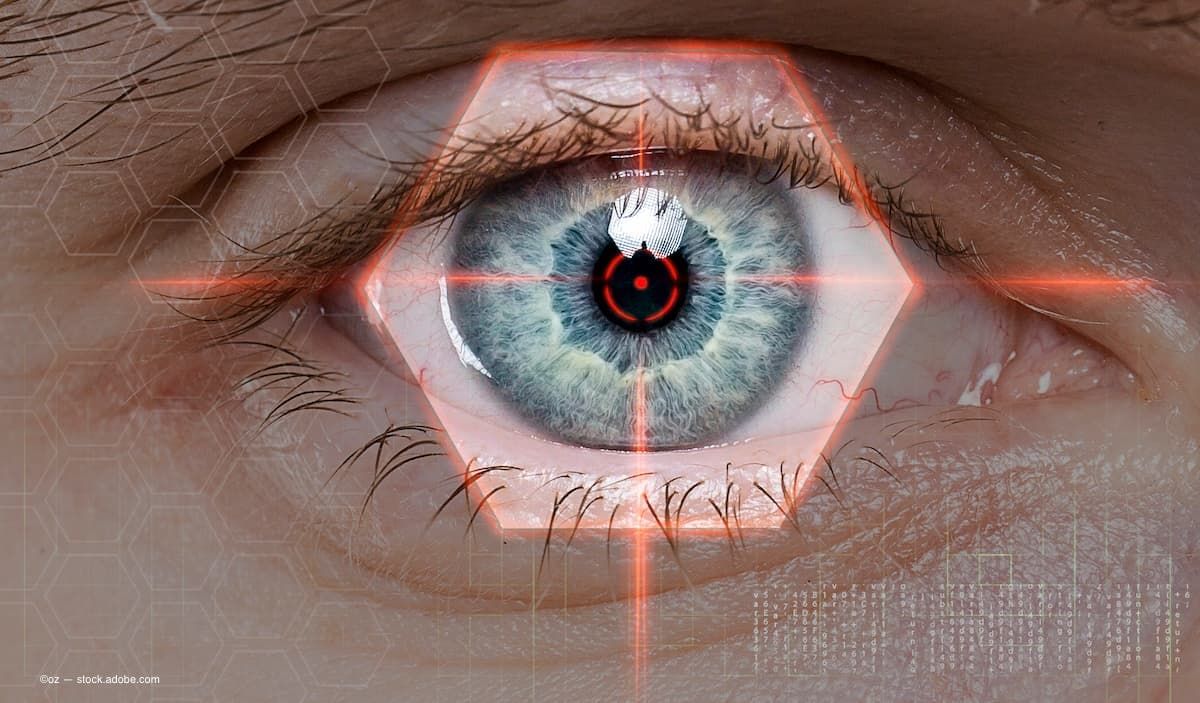AI may help with estimate of RP progression
Artificial intelligence (AI) with ultra-widefield fundus autofluorescence images may be helpful to objectively estimate progression of retinitis pigmentosa (RP) and visual function.
(Image Credit: Adobe Stock/oz)

Artificial intelligence (AI) with ultra-widefield fundus autofluorescence images may be helpful to objectively estimate progression of retinitis pigmentosa (RP) and visual function,1 according to Daisuke Nagasato, MD, PhD, and colleagues. He is from the Departments of Ophthalmology, Saneikai Tsukazaki Hospital, Himeji, Japan, and the Institute of Biomedical Sciences, Tokushima University Graduate School, Tokushima, Japan, and the Department of Technology and Design Thinking for Medicine, Hiroshima University Graduate School, Hiroshima, Japan.
The investigators pointed out that because no effective treatment is available to stop RP progression, adequate assessment and estimation of residual visual function are important clinically.
In light of this, they conducted a multicenter, retrospective, cross-sectional study to collect databetween January 1, 2012, and December 31, 2018. The goal was to determine if AI can accurately estimate the visual function of patients with RP by using ultra-widefield fundus images obtained on concurrent visits. A total of 695 consecutive patients with RP (385 women; 1,274 eyes; mean patient age, 53.9 years) were included.
Dr. Nagasato explained that 3 types of input image, ie, ultra-widefield pseudo-color images, ultra-widefield fundus autofluorescence images, and both ultra-widefield pseudo-color and fundus autofluorescence images, was paired with 1 of the 31 types of ensemble models constructed from the following 5 deep learning models: Visual Geometry Group–16, Residual Network–50, InceptionV3, DenseNet121, and EfficientNetB0. The researchers used used 848, 212, and 214 images, respectively, for training, validation, and testing data. All data from 1 institution were used for the independent testing data. Data analysis was performed from June 7, 2021, to December 5, 2022.
The results showed that the model using ultra-widefield fundus autofluorescence images alone provided the best estimation accuracy for mean deviation, central sensitivity, and visual acuity. “Standardized regression coefficients were 0.684 (95% confidence interval [CI], 0.567-0.802) for the mean deviation estimation, 0.697 (95% CI, 0.590-0.804) for the central sensitivity estimation, and 0.309 (95% CI, 0.187-0.430) for the visual acuity estimation (all p < 0.001).
The authors commented, “The results of this study suggest that the visual function estimation in patients with RP from ultra-widefield fundus autofluorescence images using deep learning might help assess disease progression objectively. The findings also suggested that deep learning models might monitor the progression of RP efficiently during follow-up.”
Reference:
Nagasato D, Sogawa T, Tanabe M, et al. Estimation of visual function using deep learning from ultra-widefield fundus images of eyes with retinitis pigmentosa. JAMA Ophthalmol. Published online February 23, 2023; doi:10.1001/jamaophthalmol.2022.6393
Newsletter
Keep your retina practice on the forefront—subscribe for expert analysis and emerging trends in retinal disease management.